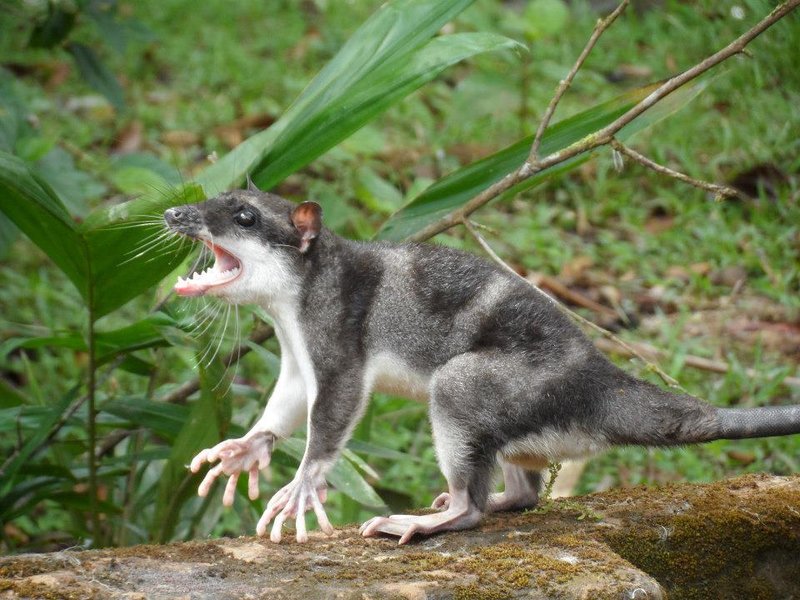
Honestly, the Yapok can be misleading at first glance. You might picture it as a friendly little swimmer, but like many wild animals, there’s more than meets the eye. When considering whether this animal poses any danger to humans, we first need to explore its behavior, habitat, and what exactly might happen if we cross paths with one. So, let’s dive in!
What Is the Yapok?
To understand the potential dangers the Yapok might pose, let’s start with a little background. The Yapok, or **Chironectes minimus**, is a water-dwelling marsupial native to the streams and rivers of countries like Colombia and Brazil. It’s the only species in its family, which makes it a unique specimen in the animal kingdom.
These clever creatures have developed some fascinating adaptations for their environment. For instance, their feet are partially webbed, allowing them to be agile swimmers. They also have a special pouch, similar to their land relatives, which helps protect their young while navigating the water. You could think of them as nature’s little divers, perfectly equipped for life in aquatic settings.
But, while the Yapok is an intriguing animal, the question arises—can it be dangerous to humans?
Do Yapoks Exhibit Aggressive Behavior?
When it comes to animal behavior, aggressive tendencies can vary widely among species. The Yapok is generally known for being shy and elusive. You might find it more likely to swim away than confront a human. Just picture a tiny, furry swimmer diving away like it’s got a secret mission to complete!
However, like many animals, a cornered Yapok might react defensively. If it feels threatened, it could attempt to bite as a means of protection. But here’s the thing—most encounters between Yapoks and humans are peaceful. They simply go about their aquatic lives, and it’s rare for them to feel the need to resort to aggression.
So, while it’s important to respect these animals and keep a safe distance, the chances of a Yapok being a direct threat to humans are relatively low.
Health Risks Associated With Yapoks
Even if Yapoks aren’t known for their aggressive behavior, they can still pose health risks in certain circumstances. One potential concern is related to diseases that can be transmitted through bites or scratches. Like many wild animals, Yapoks can carry parasites that may affect domestic pets or humans if there’s contact. It’s similar to how other wild animals can pose health risks if not treated with caution.
Moreover, since they inhabit areas near water, they can be carriers of certain waterborne pathogens. If you find yourself swimming or fishing in waters populated by Yapoks, it’s wise to stay alert and take precautions. Always wash your hands and any exposed areas after coming in contact with natural bodies of water.
The Role of Yapoks in Their Ecosystem
Let’s not forget that Yapoks are crucial players in their ecosystems. As semi-aquatic marsupials, they help maintain the balance in their habitats. Their presence can indicate the health of the aquatic environments in which they live.
You might be wondering why that matters. Well, **biodiversity** is key to a healthy ecosystem! When various animals—and plants—thrive together, they create a robust habitat that can support different life forms. Their role as prey for larger animals and as opportunistic feeders helps maintain populations of insects and smaller fish, making them beneficial for ecological health.
So, in a roundabout way, protecting Yapoks is essential not just for their survival but also for the well-being of the ecosystems they inhabit.
How to Safely Observe Yapoks
If you ever get the chance to see a Yapok, observing them from a safe distance is essential. Here are a few tips for responsible viewing:
- Keep Your Distance: Always observe from afar to avoid stressing the animal.
- Stay Quiet: Sudden movements or loud noises can scare them away.
- Use Binoculars: This way, you can enjoy watching them without getting too close.
- Respect Their Space: If you see a Yapok, give it room to move freely without obstruction.
Remember, the goal is to appreciate these fascinating marsupials without causing them any undue stress or danger.
Can Yapoks Be Pets?
Now, you might be thinking, “Could I keep a Yapok as a pet?” Here’s the reality check: while they are adorable, Yapoks aren’t suitable for domestic life. They require specialized care, a specific diet, and plenty of space to swim and explore. Plus, their wild nature means they can be unpredictable and may not adapt well to captivity.
It’s similar to thinking about keeping a wild bird as a pet—the freedom and instinct to roam can hinder their ability to thrive in a confined space. Instead, if you’re interested in unique pets, consider looking into domesticated species that offer some of the same characteristics without the wild unpredictability.
Final Thoughts: The Yapok’s Nature
In closing, while the Yapok may seem intimidating at first, the reality is they are generally harmless to humans. Their shy nature often keeps them out of trouble, and their role in the ecosystem is vital. Just remember, wild animals deserve our respect and appreciation from a distance.
If you happen to spot one during an adventure in the wild, cherish the moment as a unique opportunity to connect with nature, but always prioritize safety and conservation. Animals like the Yapok remind us of the beauty and complexity of our world, and treating them with care will help ensure they continue to thrive.

